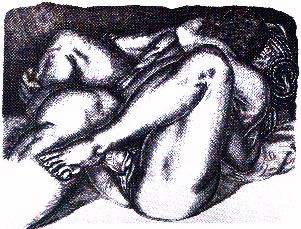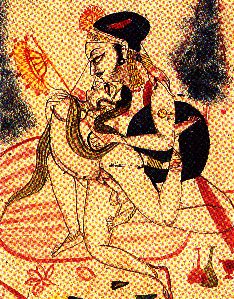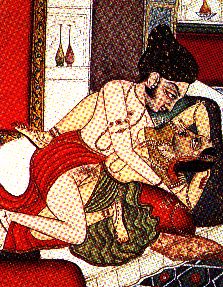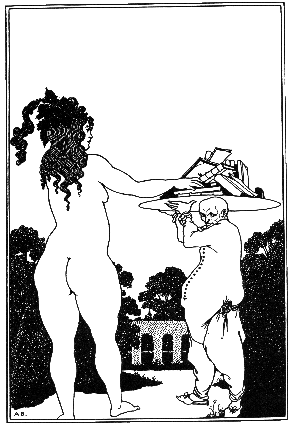- Erotic Art - Sexually inspired images - such as the so-called 'Venus of Willendorf' of around 30.000 BC - are among the earliest evidence of human culture. By the period 2000 to 1500 BC the variety of sexual postures depicted in the art of Mesopotamia and Egypt suggests that the artists (and therefore their patrons) had a sophisticated interest in the pleasures of sex as well as in rituals associated with fertility.
By the late Greek period there is no longer any possibility of misinterpreting the artist's intention. Superbly painted Attic vases, cups and bowls - often given as gifts to courtesans - depict every kind of sexual pleasure. This is fully-fledged erotic art, designed to celebrate sexuality and to instruct and inspire those who look at it.
Roman erotic art did not approach the quality achieved by the Greeks, but there is a cheerful vitality about the numerous amulets, charms and figures (where they have survived) reflecting the Roman preoccupation with the phallus which was influenced by both Greeks and Etruscans. The murals from the Pompeii brothel, which are purely aphrodisiac in intention, have a naive charm all of their own.
After the Fall of Rome, Europe had to wait for the Renaissance before artists could explore erotic themes more openly. Even then female nudes were usually 'Venus', males 'David'. Such incidents from Classical mythology as 'Leda and the Swan' were also popular as were biblical episodes like 'Susannah and the Elders'. Woe betide those who flouted this convention or overstepped the mark. Raphael's gifted pupil Giulio Romano had to flee after his drawings honestly depicting lovemaking positions were engraved and published as illustrations to Aretino's sonnets.
The same essentially hypocritical attitude has prevailed in Western art up to the present time. Some artists concerned with erotic themes had the fortune to be born during periods of greater enlightenment: (Rowlandson, Klimt) others not. Many artists - and many great ones including Raphael, Rembrandt, Goya and Turner - still managed to deal with erotic subjects. Eduard Fuchs said: 'Art has treated erotic themes at almost all periods, because eroticism lies at the root of all human life'.
Tourists who have spotted the carving of a couple happily engaged in 'soixante-neuf' in Toledo cathedral will know that sex, like love, usually finds a way.
The East - notably India and Japan - has produced considerably more erotic art than the West. China experienced repeated waves of censorship over a very long period and although Chinese landscape painting is sublime (and rich in erotic symbolism) little of the erotic art compares with that of India or Japan.
In Hinduism sex is sacred, it is the animating principle within everything. The Judaeo-Christian idea that sex is something to feel guilty about is incomprehensible to a Hindu. Consequently India has by far the richest tradition of erotic art in the world. From the very earliest times the sub-continent has produced an infinite variety of art: in the stone and wood carving of its temples; in its bronzes, and in its many schools of painting.
If Indian erotic art is the most varied and sublime any civilization has produced, then the shunga, or erotic print, of Japan is certainly the fiercest. japanese erotic art has no religious meaning and no purpose beyond the celebration of sexual pleasure. The use of perspective, the strong line, the patterned fabrics, the exaggerated genitals - everything works towards the creation of an image which is intended to be strongly aphrodisiac.
(See also: China, India, Japan)
 |









